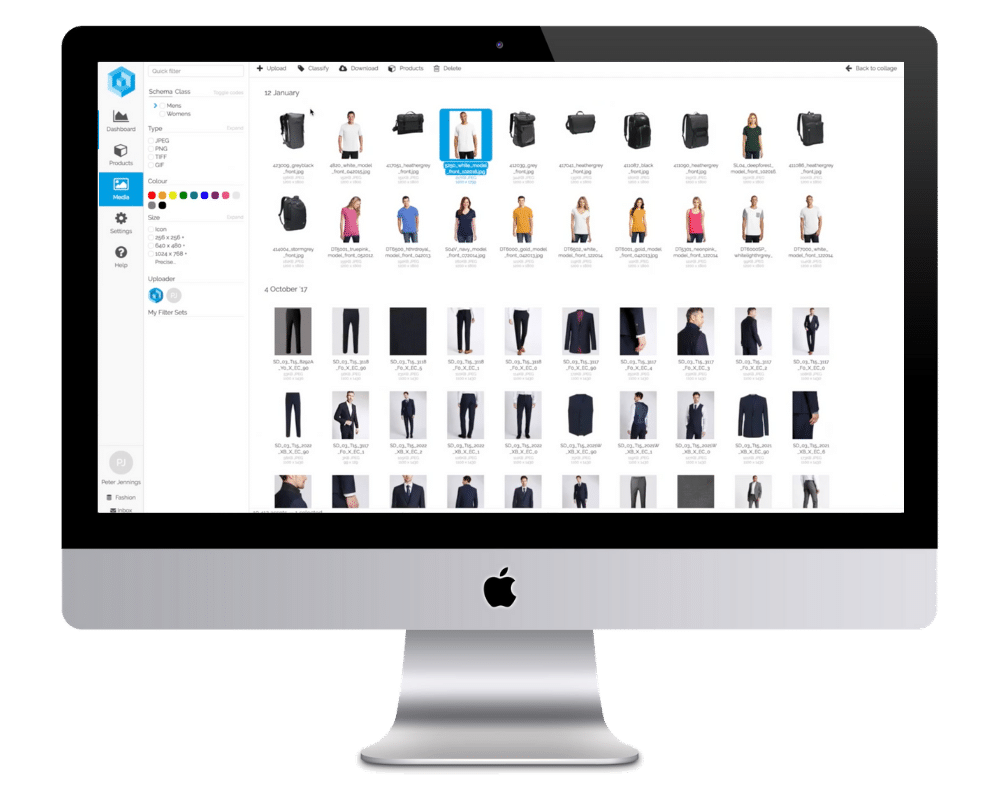Key Takeaways:
-
Distributors face growing pressure to manage massive amounts of product data across diverse channels and supplier ecosystems.
-
A Product Information Management (PIM) system like Pimberly simplifies, standardizes, and streamlines how distributors create, enrich, and distribute product data.
-
Our whitepaper, How Distributors Make the Business Case for PIM, offers actionable guidance for building internal buy-in and ROI justification.
What Is a PIM for Distributors?
PIM, or Product Information Management, is the centralized system that allows distributors to store, manage, enrich, and syndicate product data across multiple platforms. For distributors managing tens of thousands—or even millions—of SKUs, PIM acts as the single source of truth that ensures data quality, consistency, and speed to market.
Use Cases
For distributors, PIM solves several critical use cases:
-
Onboarding supplier data at scale: Automatically normalize and structure product info received in multiple formats and from different vendors.
-
Managing complex product hierarchies: Organize products into families, variants, and bundles for better discoverability.
-
Channel-specific syndication: Push tailored product content to B2B portals, ERP systems, marketplaces, eCommerce sites, and printed catalogs.
Why It Matters for Distributors
Challenge #1: Disparate Supplier Data
Distributors rarely get clean, consistent product data. One supplier might send an Excel sheet with SKUs and descriptions, another a PDF, and a third a messy export from their ERP. Standardizing and enriching all this data manually slows time to market and introduces costly errors.
Solution via Pimberly PIM: Supplier Data Onboarding Made Easy
Pimberly enables distributors to streamline supplier onboarding by ingesting and transforming any format into a standardized structure. Built-in AI capabilities can auto-categorize, flag missing attributes, and enrich listings—cutting manual workload and accelerating time to revenue.
Turning Product Data into a Competitive Advantage
Key Feature #1: Centralized Product Hub
Distributors using Pimberly gain a centralized location where all product data lives, with role-based workflows for review, enrichment, and approval. This not only saves time but ensures data accuracy across every channel.
Use Case Example: HVAC Distributor with Complex Parts Data
An HVAC distributor attending the HARDI National Conference manages over 500,000 SKUs sourced from 75+ suppliers. Before PIM, the team struggled to launch new products on their website in under three weeks. After implementing Pimberly, they reduced this to three days. The system now auto-maps supplier fields, applies categorization rules, and alerts the team to incomplete or incorrect attributes—making their eCommerce and ERP outputs more reliable.
Distributor Product Data and PIM – Built for Complexity
For distributors, product information is the engine behind everything from digital catalogs and search functionality to rebate tracking and customer portals. But without a PIM, data bottlenecks and inconsistencies erode productivity and trust.
A PIM solution designed for distributors, like Pimberly, enables:
-
Faster onboarding of new SKUs
-
Improved supplier collaboration through portals and data templates
-
Channel-specific outputs for websites, ERP, catalogs, and more
-
Validation workflows that prevent errors before they’re published
This is especially crucial in industries where technical specs, certifications, and compatibility data drive buyer confidence—think HVAC, electrical, plumbing, or MRO. A modern PIM, through centralization and automated workflows, helps distributors overcome common product data obstacles.
FAQs
Q: What types of distributors benefit most from a PIM system?
A: Distributors managing large product catalogs, serving multiple industries, or operating across digital and offline channels gain the most. PIM is especially powerful in sectors with frequent product updates, regulatory data requirements, and large supplier ecosystems—like HVAC, building supplies, and electrical.
Q: How does a PIM improve the relationship between distributors and suppliers?
A: PIM platforms like Pimberly offer supplier portals or templates that standardize how vendors submit product data. This not only reduces back-and-forth communication but also ensures data quality and compliance from day one.
Q: Can a PIM integrate with ERP and eCommerce platforms?
A: Absolutely. Pimberly integrates seamlessly with ERPs, eCommerce platforms like BigCommerce or Shopify, and digital marketplaces. This means consistent product data flows automatically to every touchpoint in your tech stack.
Q: What’s the ROI of PIM for distributors?
A: While ROI varies by use case, distributors commonly report faster time-to-market, reduced manual labor, fewer product errors, and stronger channel performance. Our whitepaper offers a detailed guide on measuring and justifying the return.
How Distributors Manage Product Data with Confidence Using Pimberly
To compete in today’s market, distributors must stop seeing product data as a back-office function and start treating it like a core differentiator. Customers now expect detailed, accurate product information across every channel—and they’ll go elsewhere if it’s not available.
Pimberly gives distributors the tools to:
-
Quickly launch new SKUs and collections
-
Automate supplier data enrichment
-
Tailor content for each channel or customer segment
-
Reduce product returns and errors through accurate specifications
Want to understand how this plays out across your business?
Takeaways for Distributors Dealing with a Large Quantity of SKUs
To summarize: As digital transformation accelerates across wholesale distribution, having a robust PIM solution is no longer a nice-to-have—it’s essential.
Whether you’re a HARDI member looking to improve your eCommerce presence or a distributor navigating the growing complexity of product data, Pimberly empowers you to:
-
Centralize and standardize your product data
-
Accelerate onboarding and enrich content at scale
-
Improve supplier collaboration and multichannel readiness
Our team is excited to connect with fellow innovators at the HARDI National Conference. Visit us to see how a modern PIM can elevate your operations—and don’t forget to download our whitepaper for insights you can bring back to your boardroom:












